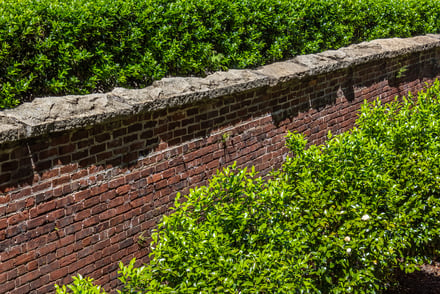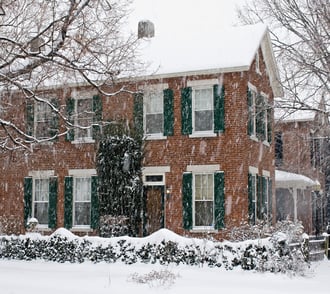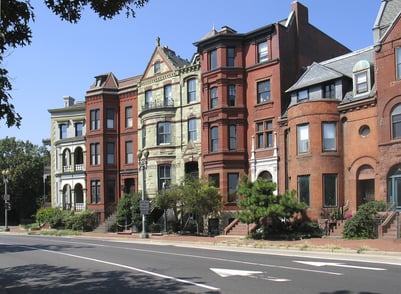Those bricks that make up your old home's facade are durable enough to last nearly a century. But the mortar holding them together is another story. It typically has to be replaced several times during the life of the walls to prevent any damage. This common repair is called tuckpointing, and when done correctly, it can dramatically increase the life of your home’s façade.
Weather Damage
Water damage is a common source of deterioration of brick and mortar joints. Changes in temperature that cause moisture to go from rain to sleet and then ice can slowly destroy masonry joints. When the mortar weakens, moisture is absorbed into the brick and mortar, which expands and contracts with the temperature fluctuations.
This thermal expansion damages the mortar which is softer than the brick. Replacing the mortar strengthens the structure by creating a relatively waterproof joint that extends the life of the walls. Maintaining the mortar joints helps enhance a historic home's original appearance.
Old Brick and Mortar
Brick homes built before the 1920’s present unique challenges to brick maintenance and restoration. Walls in many historic homes were constructed with coal-fired clay bricks and lime mortar. The historic bricks were fired at lower temperatures and are relatively soft. The composition, texture, and strength – level of hardness – of lime mortar are entirely different from cement or concrete, which are modern building materials suited for new construction.
Traditional Tuckpointing
Tuckpointing describes the restoration of historic brick buildings by removing deteriorating mortar between masonry joints and replacing it with lime-based mortar. A historic mortar contains lime, rather than cement as the core ingredient. If a historic building is tuckpointed with cement, the material's extreme density (hardness) will cause the softer coal-fired bricks to crack. An old home that is not tuckpointed with the proper materials will eventually show signs of structural damage and interior water penetration.
Owners of historic brick homes should consult with masonry contractors in Washington DC that know how to preserve and repair the brick and mortar found in historic homes.
Renaissance Development, a leader in brick restoration in DC, specializes in traditional tuckpointing projects in Capitol Hill, Shaw, Logan Circle, Adams Morgan and other areas in Washington, DC. Contact us for a free site visit and project quote.
I
Tags:
Exterior brickMar 16, 2018 4:21:02 PM



